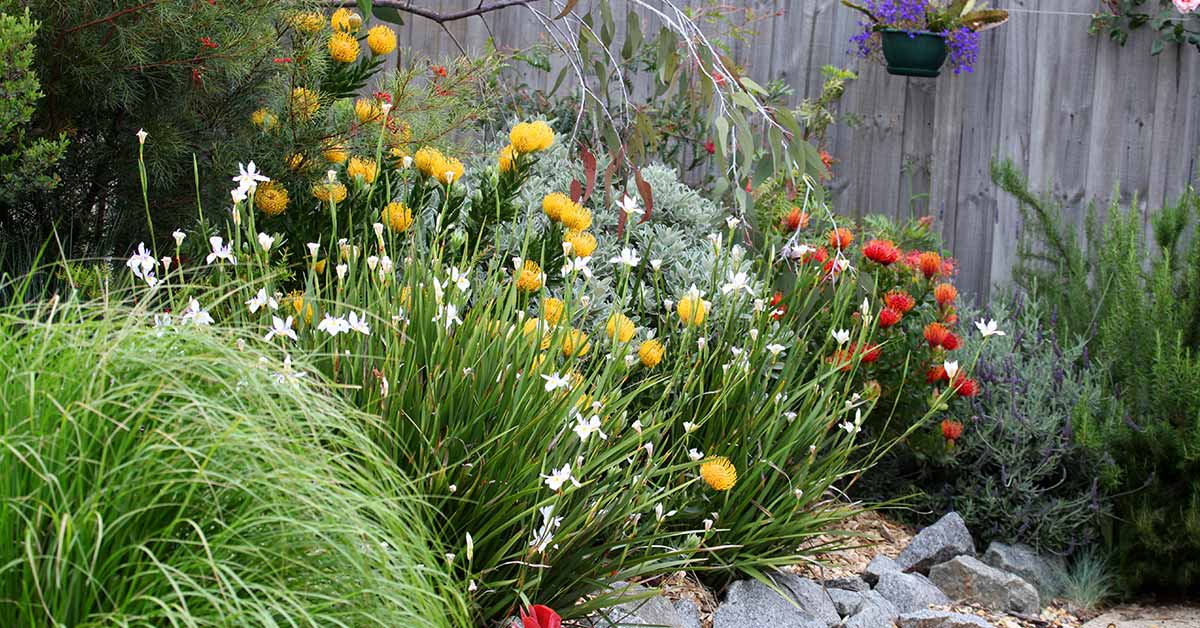Wouldn’t it be nice to wake up in the morning, step out onto your back porch with a cup of coffee in hand, and see your yard teeming with life? Hummingbirds and bees visiting the flowers, birds nesting in the trees, rabbits and squirrels skittering about? This ecological oasis you’re picturing can become a reality if you’re willing to take the plunge and put in some work.
Why create an ecological oasis?
The way we’ve built our cities is devastating to the environment. Ignoring for a moment all of the roads, sidewalks, parking lots, and houses that occupy vital habitat to local species, our lawns are a toxic nightmare. Ripping out your lawn is a good place to start. Why? Let’s dig in.
Rethink the lawn
According to the NRDC, in the US alone, grass turf consumes 3 trillion gallons of water, 200 million gallons of gas (for lawn mowers) and 70 million pounds of pesticides.
If you have a lawn now, it might be hard to reckon with those numbers. What’s a little bit of water a few times a week, a mow once a week, and a little weed killer? It may seem like only a drop in an ocean, but it does have an impact, and not a good one, on your local ecosystems.
So rethink the toxic lawn. If you absolutely must have turf of some kind, a clover lawn is a good compromise. Clover doesn’t need nearly as much water due to deeper roots, requires no pesticides of any kind, no mowing, and they produce flowers that are helpful for local pollinators.
Plant edible trees and shrubs
Food and water are the two material things that living organisms need most in order to survive. For any animal, obtaining these two things is the highest priority. So providing these food sources to local wildlife can help create an ecological oasis in an otherwise urban, human-settled region.
Before you race out and grab an apple and a pear tree for your yard, consider what trees are native. A mulberry tree, which is native to Asia and temperate regions of North America, is an excellent source of food for birds and other animals. Walnut trees, which have species native to North and South America as well as Asia and Europe can provide a food source for squirrels.
Walnuts and mulberries can be consumed by humans too, so you’re providing food for yourself and other animals. Get creative here, there are lots of native edible trees and shrubs you can plant.
Provide a water source
We’ve touched upon food, now let’s talk about why a water source is vital. Without readily available water, most animals will die off. And sadly, in urban areas, finding a water source can be difficult for organisms. So providing a water source, even something as simple as a small bird bath, can have a huge impact.
In my experience, installing a small pond can attract a surprising array of animals to your ecological oasis. Within a year of putting in a small, 50 gallon pond, I suddenly had toads, frogs, and other animals roaming around – animals that were never present before. Plus ponds are just cool, broadly speaking. Pond plants can add a real flair to your ecological oasis.
Always take extra precautions when installing a body of water, though. Be sure that children and animals won’t be at risk.
Plant native plants
When planning an ecologically diverse little oasis for your yard, it can be enticing to run out and buy as many random flowers and plants as you can find, but before you go racing to your local nursery, do a bit of research on native plants for your area.
Why? Think about it this way. Especially if you live in the Americas, it’s only been over the course of the last hundred years that most non-native species have been introduced to this continent. So for millions of years, wildlife on these continents became accustomed to utilizing the plants that grew here.
Planting non-native species can have unintended consequences, like unwanted spread. Planting native flowers and plants helps provide your local wildlife with a source of food they are accustomed to.
Avoid all commercial chemical products
The final step to creating your ecological oasis is eschewing the use of commercial chemical products in all of their forms to the best of your abilities. Avoid the use of chemical fertilizers to enrich your soil.
If you have difficulties with pests, try to find a way to naturally deter them, like setting up a garden to attract ladybugs and praying mantises. Using any kind of chemical in your ecological oasis unfortunately defeats the purpose.













